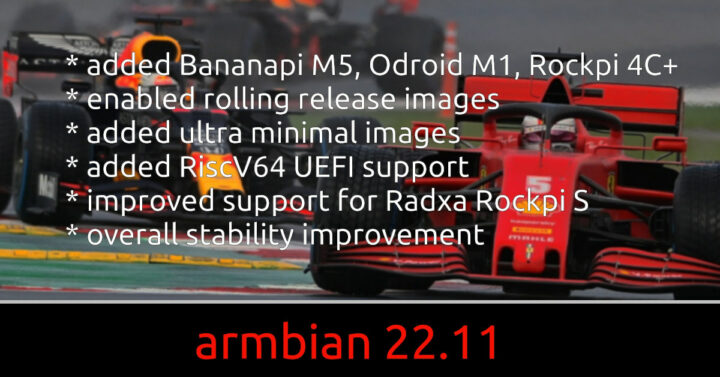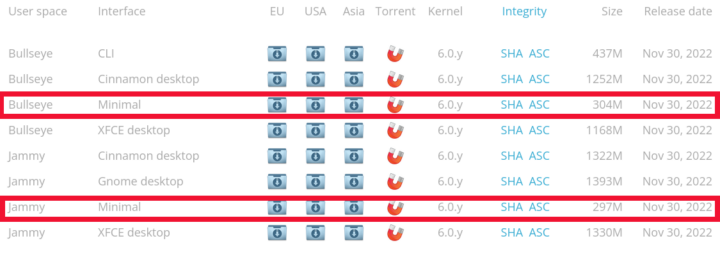Armbian 22.11 has just been released with three new SBCs, support for 64-bit RISC-V UEFI, a new ultra-minimal image optimized for software development, and various improvements.
Armbian was born as a framework to build better OS images, usually Debian or Ubuntu, for Arm-based single board computers from Orange Pi, Hardkernel (ODROID), FriendlyElec, Banana Pi, and others, but now with the release of Armbian 22.11, support for the RISC-V architecture has started since the system can now generate 64-bit RISC-V UEFI images.
Some other highlights of Armbian 22.11 include:
- Added support for Banana Pi BPI-M5 (Amlogic S905X3), ODROID-M1 (Rockchip RK3568), and Rock Pi 4C Plus (Rockchip RK3399-T)
- Enabled community images with a weekly release cycle
- Added ultra minimal images optimized for software deployment
- Improved support for the Rock Pi S (Rockchip RK3308)
- Kernel upgrade is frozen by default to improve stability
I could not find details about the new “Minimal” images, but as can be seen in the screenshot above listing some of the Banana Pi BPI-M5 images, it is about 130MB smaller than the usual “Client” image. There’s no specific RISC-V SBC mentioned in the release, but I’d expect the first RISC-V boards to be supported by Armbian to include the StarFive Vision 2, or the Allwinner D1-based Nezha or Sipeed LicheeRV SBCs. A more detailed changelog can be found on the documentation website.
If you’d like to upgrade simply run those two commands:
|
1 2 |
sudo apt update sudo apt upgrade |
For a new or fresh installation, you can browse the list of supported boards, download the Debian or Ubuntu image you’d like to install, and flash it to a MicroSD card with USBImager or other tools. More details may be available in the announcement.

Jean-Luc started CNX Software in 2010 as a part-time endeavor, before quitting his job as a software engineering manager, and starting to write daily news, and reviews full time later in 2011.
Support CNX Software! Donate via cryptocurrencies, become a Patron on Patreon, or purchase goods on Amazon or Aliexpress






